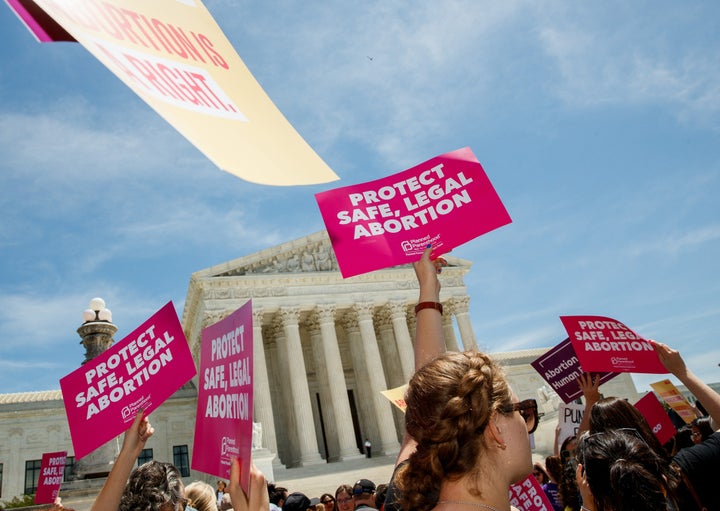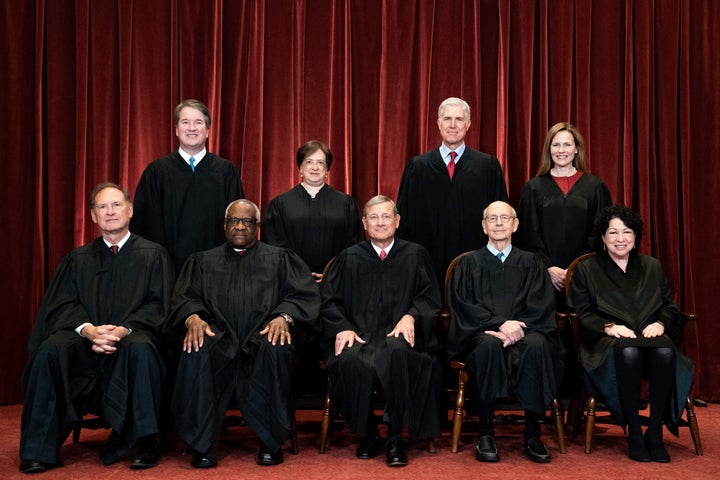The U.S. Supreme Court justices have said that they are willing to reconsider the reproductive protections established nearly five decades ago in Roe v. Wade, setting the stage for an abortion rights battle that’s been years in the making.
The justices announced Monday that the court will hear a case concerning a Mississippi ban on abortions beyond 15 weeks of pregnancy, marking the first time the nation’s highest court has considered an abortion ban since that landmark decision in 1973, which has protected access to the procedure for 48 years.
Former President Donald Trump’s impact on the court, now loaded with three of his conservative nominees in lifetime appointments, may soon be felt by the hundreds of thousands of patients who seek abortion care in the United States each year.
Here’s what you should know about the case, which is expected to appear before the Supreme Court in the late fall.
It concerns a ban on abortions before a fetus is viable outside the womb
The justices will consider a law enacted in Mississippi in 2018, and blocked from taking effect, that would ban abortion after 15 weeks of pregnancy, making exceptions only for medical emergencies or fetal abnormalities.
The Supreme Court will consider one of three questions posed in the case: “Whether all pre-viability prohibitions on elective abortions are unconstitutional” ― a question that addresses not just Mississippi’s 15-week limit but also a spate of even more restrictive abortion bans that have sailed through state legislatures in recent years.
Upon its passage, the legislation was quickly challenged by abortion rights advocates arguing that the legislation was in clear violation of protections afforded by Roe v. Wade, which established that lawmakers may not put excessive government restriction on a woman’s right to choose.
The architects of this legislation, like those of so many others like it, explicitly developed the law as a test for a conservative Supreme Court. It will appear before the justices as Dobbs v. Jackson Women’s Health Organization ― a battle between Mississippi’s state health director and the state’s sole remaining abortion clinic.

“It’s like a shot in the back to women,” Shannon Brewer, the clinic director at Jackson Women’s Health Organization, said on a call with reporters Monday in reaction to the development. “This all came down to me so quickly this morning, and I haven’t actually gotten myself completely together from it. But I know that this is going to be a devastating impact if this goes through, for women not only here in Mississippi but everywhere.”
Lower courts have unilaterally ruled against the Mississippi law, making it an unusual case for the Supreme Court to take on. The justices took nearly eight months to make Monday’s decision, legal analysts noted, indicating that there may have been a significant battle behind the scenes about whether to take on the case.
What will happen if the justices rule in favor of the ban?
A decision in favor of pre-viability bans would essentially toss out Roe v. Wade, Nancy Northup, the president and CEO of the Center for Reproductive Rights (CRR), said in a call with reporters Monday.
“The court cannot uphold this law in Mississippi without overturning Roe’s core holding,” she said. “And that core holding is every pregnant person has the right to decide whether to continue their pregnancy prior to viability. That has been reaffirmed again and again and again and again.”
Because so many state legislatures are already hostile to abortion rights and have so-called “trigger laws” ― which would immediately ban abortion in those states if Roe v. Wade is overturned ― the court’s decision has very serious implications.
“The stakes here are extraordinarily high,” Northup said. “If the court were to weaken the right to abortion, abortion would likely be banned ― banned entirely in half of the country, many places in the South and the Midwest.”
CRR estimates that 24 states would likely prohibit abortion entirely if Roe v. Wade falls.
Those most affected would be Black people and people struggling to make ends meet, as “they already face significant hurdles to accessing abortion,” Northup added.
How is SCOTUS likely to rule?
It’s hard to say, but we can look to some clues from the past.
The last major abortion case the justices decided was in June 2020, when they struck down a Louisiana law severely limiting who could provide abortions. The court’s four most conservative justices at the time, all of whom still sit on the bench, voted in favor of the law. Chief Justice John Roberts cast a swing vote with the liberal justices, citing precedent on the issue.

But much has changed since then. Justice Ruth Bader Ginsburg, a stalwart supporter of reproductive rights, died three months after that decision. Trump found a replacement in Amy Coney Barrett, who’s hinted she’s open to overturning Roe v. Wade and once signed her name to an ad calling it a “barbaric legacy.”
The court now has just three members firmly committed to upholding Roe v. Wade: Stephen Breyer, Sonia Sotomayor and Elena Kagan. That means at least two members of the court’s more conservative faction would have to side with them in order to uphold abortion access.
It appears unlikely that Clarence Thomas, Samuel Alito or Neil Gorsuch would be one of those justices. Roberts and Brett Kavanaugh appear to be most cautious when it comes to upending long-standing precedent, but that’s far from a sure thing.
That has reproductive rights activists extremely worried.
“Although Donald Trump is no longer in the White House, he leaves behind a dark legacy of anti-choice, anti-freedom judges hostile to our fundamental rights,” NARAL Pro-Choice America’s chief campaigns and advocacy officer Christian LoBue said in a statement Monday. “The anti-choice movement is laser-focused on banning abortion and determined to capitalize on the anti-choice supermajority Trump solidified on the Court.”

